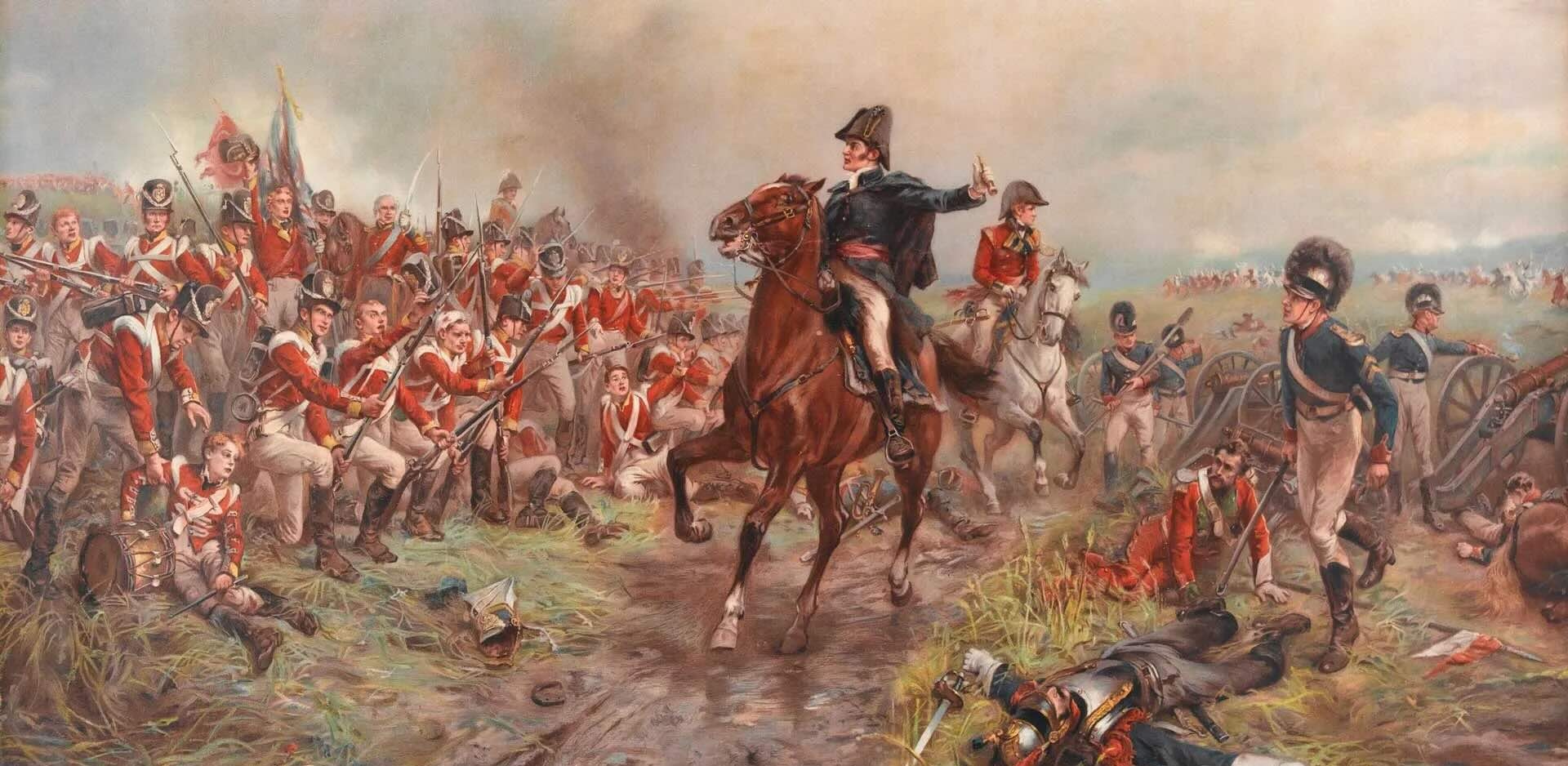
What happened at the Battle of Waterloo? The Battle of Waterloo, fought on June 18, 1815, marked the end of the Napoleonic Wars. Napoleon Bonaparte faced off against the Duke of Wellington's British-led coalition and Prussian forces under Gebhard Leberecht von Blücher. Napoleon's defeat at Waterloo led to his final exile to Saint Helena. This clash, near present-day Belgium, saw intense fighting with over 180,000 soldiers. Key moments included the defense of Hougoumont, the charge of the French Imperial Guard, and the timely arrival of the Prussian army. Waterloo's outcome reshaped Europe's political landscape, leading to a century of relative peace.
The Battle of Waterloo: A Turning Point in History
The Battle of Waterloo, fought on June 18, 1815, was a monumental event that shaped the course of European history. This clash between Napoleon Bonaparte's French army and the Seventh Coalition, led by the Duke of Wellington and Prussian General Blücher, marked the end of the Napoleonic Wars. Here are some fascinating facts about this historic battle.
-
The Battle of Waterloo took place near the town of Waterloo in present-day Belgium.
-
Napoleon Bonaparte commanded around 73,000 troops during this battle.
-
The Duke of Wellington led an allied force of approximately 68,000 soldiers.
-
Prussian General Gebhard Leberecht von Blücher brought an additional 50,000 troops to support Wellington.
-
The battle lasted for about 10 hours, from around 11 a.m. to 9 p.m.
Key Figures and Strategies
Understanding the key figures and their strategies provides insight into how the battle unfolded and why it ended the way it did.
-
Napoleon's strategy relied heavily on a swift and decisive attack to break the enemy lines.
-
Wellington's defensive tactics included the use of strong positions and the element of surprise.
-
Blücher's timely arrival with Prussian reinforcements was crucial in turning the tide against Napoleon.
-
Napoleon suffered from a stomach ailment during the battle, which may have affected his decision-making.
-
The Duke of Wellington famously said, "It has been a damned nice thing—the nearest run thing you ever saw in your life."
The Battlefield and Conditions
The terrain and weather conditions played significant roles in the battle's outcome.
-
Heavy rain the night before the battle made the ground muddy and difficult for troop movements.
-
The battlefield was approximately 4 square miles in size.
-
Key locations included the Hougoumont farm, La Haye Sainte farmhouse, and the village of Plancenoit.
-
The muddy conditions hindered Napoleon's artillery, reducing its effectiveness.
-
Wellington's troops used the reverse slope of hills to shield themselves from French artillery fire.
Aftermath and Legacy
The consequences of the Battle of Waterloo were far-reaching, affecting not just Europe but the entire world.
-
Napoleon was exiled to the remote island of Saint Helena in the South Atlantic Ocean.
-
The battle marked the end of the Napoleonic Wars, which had lasted for over a decade.
-
The Congress of Vienna, which had been ongoing, was able to finalize its decisions and reshape Europe.
-
The term "Waterloo" has since become synonymous with a decisive and crushing defeat.
-
The battlefield is now a popular tourist destination, with a large mound called the Lion's Mound commemorating the battle.
Interesting Tidbits
Beyond the major events and figures, there are many lesser-known facts that add color to the story of Waterloo.
-
The British army included soldiers from various countries, including the Netherlands, Belgium, and Germany.
-
The French Imperial Guard, Napoleon's elite troops, made a final desperate attack but were repelled.
-
The battle saw the first use of rockets by the British army, known as Congreve rockets.
-
The Duke of Wellington later became Prime Minister of the United Kingdom.
-
The phrase "meeting one's Waterloo" originates from this battle, meaning to encounter one's ultimate defeat.
The Battle of Waterloo remains one of the most studied and discussed military engagements in history, symbolizing the end of an era and the beginning of a new chapter in European history.
The Battle's Lasting Impact
The Battle of Waterloo wasn't just a clash of armies; it reshaped Europe. Napoleon's defeat ended his rule and ushered in a period of relative peace. The Congress of Vienna redrew borders, aiming to balance power and prevent future conflicts. This battle also marked the rise of Britain as a dominant global force, influencing politics and culture for decades.
Soldiers' bravery and strategies used still get studied in military academies. The battlefields, now historical sites, attract visitors eager to learn about this pivotal moment. Art, literature, and even movies keep the memory alive, reminding us of the sacrifices made.
Understanding Waterloo helps grasp Europe's complex history. It shows how one event can change the course of nations. So, next time you hear about Waterloo, remember its profound impact on the world.
Was this page helpful?
Our commitment to delivering trustworthy and engaging content is at the heart of what we do. Each fact on our site is contributed by real users like you, bringing a wealth of diverse insights and information. To ensure the highest standards of accuracy and reliability, our dedicated editors meticulously review each submission. This process guarantees that the facts we share are not only fascinating but also credible. Trust in our commitment to quality and authenticity as you explore and learn with us.
